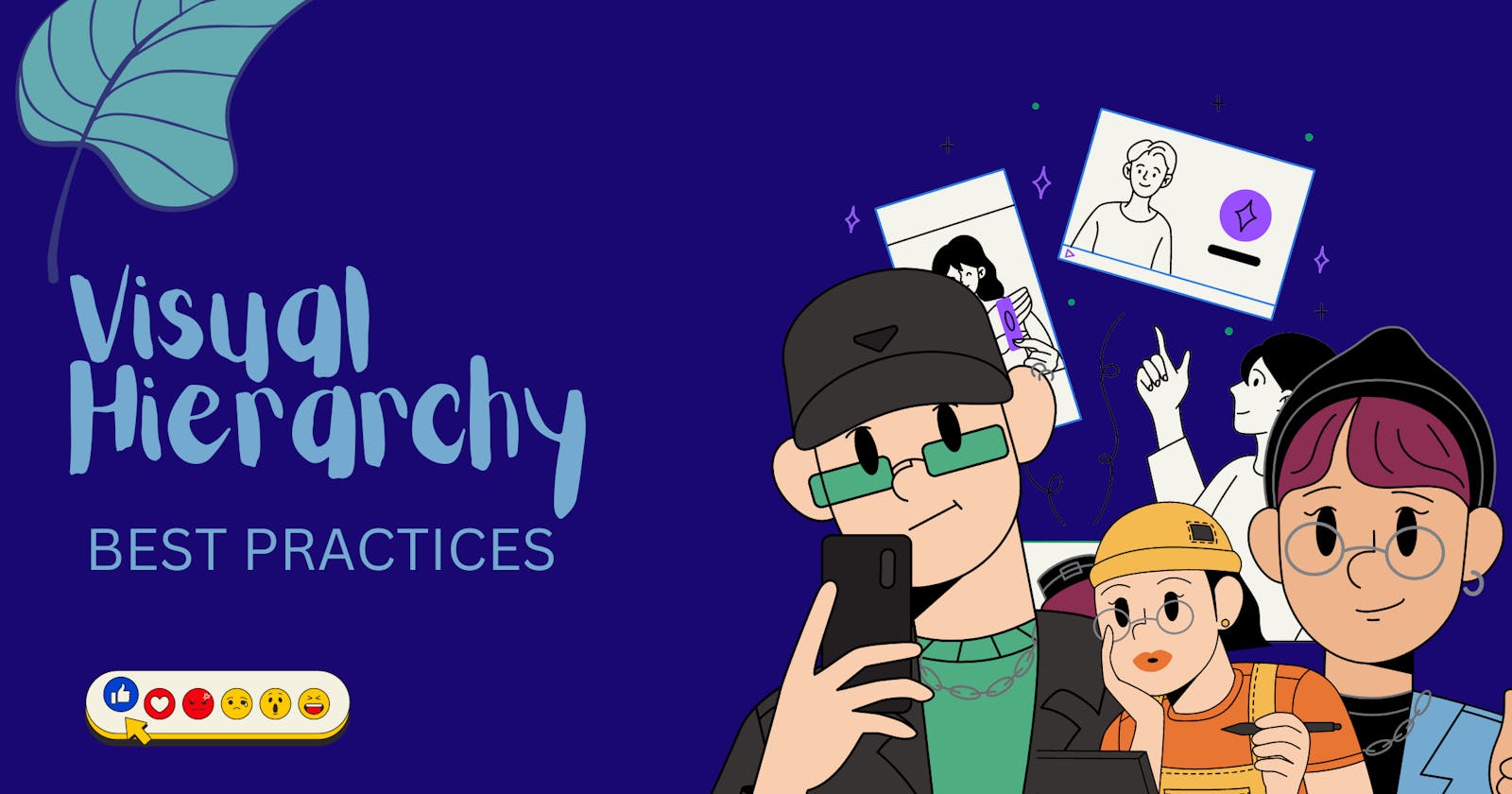When it comes to designing an effective layout, visual hierarchy is key. Visual hierarchy is the arrangement of elements on a page in order of importance, allowing viewers to easily understand the message you're trying to convey. By using best practices for visual hierarchy, you can create a clear and engaging layout that captures the attention of your audience.
In this article, we'll explore some of the best practices for creating a visual hierarchy that will help you communicate your message clearly and effectively.
Use Contrast to Establish Hierarchy
One of the most effective ways to establish a visual hierarchy is through the use of contrast. By using contrasting elements, you can create a clear distinction between different levels of importance. For example, using a bold font for headlines and a lighter font for body text can make it clear which content is more important.
Another way to use contrast is through color. By using a bright color for important elements and a muted color for less important elements, you can create a visual hierarchy that guides the viewer's eye to the most important parts of the layout.
Create Clear and Consistent Navigation
Navigation is an important part of any layout, and it must be clear and consistent. Navigation should be easy to find, and it should be consistent across all pages of your website. This makes it easy for viewers to find what they're looking for, and it helps establish a clear hierarchy of information.
One way to create clear and consistent navigation is by using a navigation bar at the top of your website. This makes it easy for viewers to find the main sections of your website, and it ensures that navigation is consistent across all pages.
Use Size and Scale to Establish a Hierarchy
Size and scale are important elements in establishing a visual hierarchy. Larger elements tend to grab the viewer's attention first, so it's important to use size and scale to guide the viewer's eye to the most important elements of the layout.
For example, a large image can be used to draw the viewer's attention to a specific part of the layout, while smaller images can be used to support the main content. Similarly, using a larger font for headlines and a smaller font for body text can help establish a clear hierarchy of information.
Keep it Simple
When it comes to creating a clear and engaging layout, simplicity is key. Too many elements on a page can be overwhelming and confusing for viewers, making it difficult to establish a clear hierarchy of information.
To keep your layout simple, focus on the most important elements of your message and eliminate anything that's not necessary. Use white space to create a clear separation between different elements, and keep the overall design clean and uncluttered.
Use Visual Cues to Guide the Viewer's Eye
Visual cues can be used to guide the viewer's eye through the layout, establishing a clear hierarchy of information. For example, using arrows or lines to point to important elements can help draw the viewer's attention to the most important parts of the layout.
Similarly, using images that direct the viewer's gaze toward important content can be an effective way to guide the viewer's eye. For example, using an image of a person looking towards a call to action can help draw the viewer's attention to that element.
In addition to the aforementioned techniques, there are a few more tips and tricks you can use to create a visually appealing and engaging layout. These include:
Use White Space Effectively
White space, also known as negative space, refers to the space between design elements. While some may think of white space as wasted space, it is a crucial element of design. By effectively using white space, you can create a clean and uncluttered layout that is easy to read and navigate.Use Color Appropriately
Color can be a powerful tool when it comes to creating a visual hierarchy. Using color to highlight important information, such as calls to action, can draw the viewer's attention to those elements. However, it's important to use color sparingly and appropriately, as using too many colors can make a design appear busy and overwhelming.Consider Typography
Typography, or the art of arranging type, can have a big impact on the readability and effectiveness of a design. Choosing the right font, font size, and font-weight can help establish hierarchy and make important information stand out.Test Your Design
Once you've created your layout, it's important to test it to ensure it is effective. You can do this by conducting user testing or gathering feedback from colleagues or friends. By testing your design, you can identify any issues or areas for improvement and make necessary changes.
In conclusion, visual hierarchy is an essential part of creating a clear and engaging layout. By using contrast, creating clear and consistent navigation, using size and scale to establish hierarchy, keeping it simple, and using visual cues to guide the viewer's eye, you can create a layout that effectively communicates your message to your audience.
Remember, it's important to keep your design simple and easy to navigate. By using visual hierarchy effectively, you can create a layout that effectively communicates your message to your audience. So next time you're designing a layout, remember to keep these tips in mind and create a design that is both clear and engaging.
And there you have it, folks! These are just a few of the best practices for creating a clear and engaging layout. By using contrast, creating clear and consistent navigation, using size and scale to establish hierarchy, keeping it simple, and using visual cues to guide the viewer's eye, you can create a layout that effectively communicates your message to your audience.
If you want to learn more about visual hierarchy and design, be sure to follow me on Twitter (@_PulkitSingh). Happy designing!
